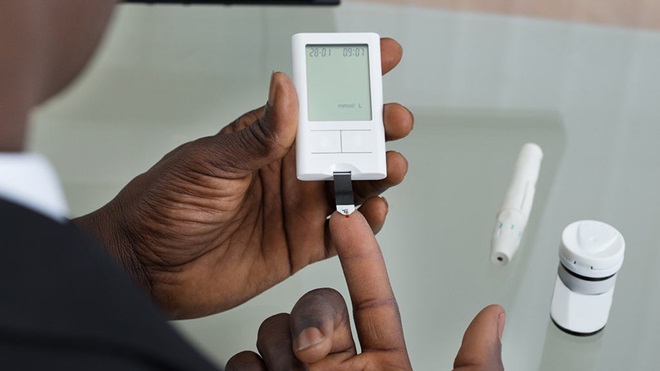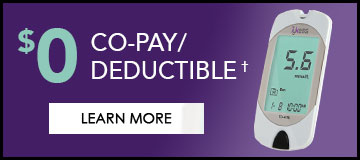
I. Introduction
In the vast landscape of diabetes management, where every decision carries weight, financial considerations often lurk in the shadows, casting an unspoken influence on the choices individuals make regarding their glucose monitoring devices. While the importance of accuracy, ease of use, and data management features in selecting a monitor cannot be overstated, the impact of financial factors is a lesser-explored facet that profoundly shapes the diabetes experience.
A. Setting the Stage: The Importance of Financial Considerations in Glucose Monitor Selection
For many individuals living with diabetes in Ontario and Saskatchewan, where healthcare systems vary in coverage and support, the financial burden of managing their condition looms large. Beyond the direct costs of medications and doctor visits, the recurring expenses associated with glucose monitoring can pose significant challenges. Understanding the intricacies of these financial implications is paramount for empowering patients to make informed decisions about their health.
B. Overview of Financial Factors Impacting Glucose Monitor Choice
While the notion of affordability may seem straightforward, the landscape of glucose monitoring devices introduces a nuanced interplay of costs, coverage, and long-term implications. From the initial investment in the device itself to the ongoing expenses of test strips and accessories, the financial considerations extend far beyond the surface. Moreover, the influence of insurance coverage, co-pays, and deductibles adds layers of complexity, shaping the accessibility of different monitoring options for individuals across diverse socioeconomic backgrounds.
In this article, we delve into the often-overlooked realm of financial considerations in glucose monitor selection, shedding light on the nuanced factors that influence decisions and offering insights to navigate this terrain with confidence. Through a lens focused on affordability, accessibility, and empowerment, we aim to equip individuals with the knowledge and resources needed to navigate the intersection of health and finance in diabetes management effectively.
II. Understanding the Financial Burden of Diabetes Management
Living with diabetes entails a multifaceted journey that extends beyond medical considerations to encompass financial realities that significantly impact individuals’ lives. In the provinces of Ontario and Saskatchewan, where healthcare systems play a pivotal role in providing support, the financial burden of managing diabetes is a pressing concern for many.
A. The Cost of Living with Diabetes
Beyond the direct expenses associated with medical treatments and supplies, individuals with diabetes face a myriad of indirect costs that often go unnoticed. From transportation to medical appointments to the time taken off work for managing the condition, the financial toll can be substantial. Moreover, the long-term implications of diabetes, such as complications and comorbidities, introduce additional financial strain on individuals and healthcare systems alike.
B. Financial Challenges Faced by Patients in Ontario and Saskatchewan
While both Ontario and Saskatchewan offer various support programs and insurance coverage options for diabetes management, navigating the system can be daunting for individuals, particularly those with limited financial resources. Disparities in access to healthcare services and resources further exacerbate the financial challenges faced by marginalized communities, amplifying the need for targeted interventions to address these disparities effectively.
C. The Role of Insurance Coverage and Out-of-Pocket Expenses
Insurance coverage plays a critical role in mitigating the financial burden of diabetes management, yet the extent of coverage and out-of-pocket expenses vary widely among different plans and providers. Understanding the intricacies of insurance policies, including deductibles, co-pays, and coverage limits, is essential for individuals to make informed decisions about their healthcare needs. Additionally, factors such as changes in employment status or shifts in insurance coverage can significantly impact individuals’ ability to afford essential diabetes supplies and medications.
In this section, we explore the complex landscape of financial challenges faced by individuals living with diabetes in Ontario and Saskatchewan, shedding light on the hidden costs and systemic barriers that shape their experiences. By understanding the interplay between financial considerations and diabetes management, we can better advocate for policies and interventions that prioritize affordability and accessibility for all.
III. Factors Influencing Glucose Monitor Selection
In the pursuit of effective diabetes management, the choice of a glucose monitoring device is a critical decision that is influenced by a myriad of factors, including financial considerations. Understanding how these factors intersect can empower individuals to make informed decisions that align with their health needs and financial circumstances.
A. Cost of the Device Itself
While the cost of the glucose monitoring device may seem like a straightforward consideration, it encompasses more than just the initial purchase price. Individuals must also consider factors such as warranties, durability, and the availability of replacement parts. Moreover, the long-term value proposition of the device, including its compatibility with future technologies and updates, adds another layer to the financial calculus.
B. Cost of Supplies and Accessories
Beyond the device itself, the ongoing expenses associated with supplies and accessories, such as test strips, lancets, and control solutions, play a significant role in the overall cost of glucose monitoring. The frequency of testing, individual testing habits, and the compatibility of the device with third-party supplies can all impact the affordability of maintaining a consistent monitoring regimen.
C. Long-term Maintenance Costs
In addition to the immediate costs of purchasing the device and supplies, individuals must also consider the long-term maintenance costs, including battery replacements, calibration requirements, and software updates. These hidden expenses can accumulate over time, influencing the overall affordability and sustainability of a particular glucose monitoring system.
D. Accessibility and Affordability of Test Strips
Test strips are a vital component of glucose monitoring, yet their accessibility and affordability can vary widely depending on factors such as insurance coverage, pharmacy pricing, and availability of generic alternatives. Individuals must weigh the cost-effectiveness of different test strip options while ensuring consistent and accurate monitoring to effectively manage their diabetes.
By examining the intricate interplay of these financial factors in glucose monitor selection, individuals can navigate the marketplace with confidence, choosing a monitoring system that meets their health needs while remaining within their budget constraints. Moreover, fostering awareness of affordable monitoring options and advocating for equitable access to essential diabetes supplies can help alleviate the financial burden faced by individuals living with diabetes in Ontario and Saskatchewan.
IV. Evaluating Cost-effectiveness vs. Features
In the realm of glucose monitoring devices, striking a balance between cost-effectiveness and essential features is a delicate yet essential endeavor for individuals managing diabetes. While the allure of cutting-edge technology and advanced features may be tempting, the financial implications of these choices cannot be overlooked. Here, we delve into the nuanced considerations of evaluating cost-effectiveness versus features in glucose monitor selection.
A. Balancing Affordability with Necessary Features
The quest for the perfect glucose monitoring device often involves a trade-off between affordability and functionality. While advanced features such as continuous glucose monitoring (CGM), smartphone connectivity, and data analysis capabilities may offer added convenience and insights, they often come with a higher price tag. Individuals must carefully assess their specific health needs and lifestyle preferences to determine which features are essential for effectively managing their diabetes while remaining within their budgetary constraints.
B. Assessing the Value Proposition of Different Glucose Monitoring Systems
Beyond the surface-level features, individuals must also consider the overall value proposition of different glucose monitoring systems. This includes factors such as reliability, accuracy, ease of use, and customer support services. While a more affordable device may offer basic functionality, it may lack the reliability and accuracy necessary for effective diabetes management. Conversely, a high-end device with all the bells and whistles may provide added convenience but may not necessarily translate into improved health outcomes.
C. Considering Long-term Savings and Investment in Health
In evaluating the cost-effectiveness of glucose monitoring devices, individuals must also consider the long-term savings and investment in health associated with their choice. While a more expensive device may require a larger upfront investment, it may offer cost-saving benefits in the form of reduced healthcare utilization, fewer complications, and improved quality of life. Moreover, investing in a reliable and accurate monitoring system can ultimately lead to better health outcomes and lower overall healthcare costs in the long run.
By adopting a holistic approach to evaluating cost-effectiveness versus features in glucose monitor selection, individuals can make informed decisions that prioritize both their financial well-being and their health. Moreover, fostering awareness of the long-term benefits of investing in reliable monitoring devices can empower individuals to make proactive choices that support their diabetes management journey in Ontario and Saskatchewan.
V. Affordable Glucose Monitoring Solutions
In the pursuit of effective diabetes management, affordability plays a pivotal role in ensuring access to essential monitoring tools for individuals living with diabetes in Ontario and Saskatchewan. While the market is saturated with a myriad of glucose monitoring devices, identifying truly affordable solutions that meet the needs of diverse individuals can be a daunting task. Here, we explore budget-friendly options and alternative approaches to glucose monitoring that prioritize accessibility and affordability without compromising on quality.
A. Exploring Budget-friendly Options on the Market
Despite the proliferation of high-tech glucose monitoring devices, there are several budget-friendly options available on the market that offer reliable and accurate results without breaking the bank. These devices may lack some of the bells and whistles of their more expensive counterparts but provide essential functionality at a fraction of the cost. By researching and comparing different brands and models, individuals can identify affordable options that align with their health needs and financial circumstances.
B. Comparing Different Brands and Models Based on Cost and Performance
When evaluating budget-friendly glucose monitoring solutions, individuals must consider not only the upfront cost of the device but also the long-term expenses associated with supplies and maintenance. By conducting a cost-benefit analysis of different brands and models, individuals can identify the most cost-effective option that meets their specific needs. Moreover, seeking feedback from other users and healthcare professionals can provide valuable insights into the performance and reliability of different devices.
C. Highlighting Alternative Monitoring Methods and Technologies
In addition to traditional glucose monitoring devices, there are several alternative methods and technologies available that offer affordable and accessible monitoring solutions for individuals living with diabetes. From smartphone apps that leverage built-in sensors to wearable devices that track glucose levels continuously, these innovative approaches provide real-time insights into blood sugar levels without the need for traditional fingerstick testing. By exploring these alternative monitoring methods, individuals can find solutions that fit seamlessly into their lifestyle while minimizing the financial burden of diabetes management.
By championing affordable glucose monitoring solutions and highlighting alternative approaches to traditional monitoring, we can empower individuals living with diabetes in Ontario and Saskatchewan to take control of their health without breaking the bank. Moreover, fostering awareness of these budget-friendly options can help alleviate the financial strain faced by individuals and promote equitable access to essential diabetes care resources.
VI. Managing Diabetes Expenses Wisely
Navigating the financial landscape of diabetes management requires a strategic approach that empowers individuals to make informed decisions while maximizing the value of their healthcare dollars. In Ontario and Saskatchewan, where healthcare systems vary in coverage and support, managing diabetes expenses wisely is essential for individuals to maintain optimal health outcomes without incurring unnecessary financial strain. Here, we explore practical strategies for budgeting, saving, and accessing support services to effectively manage diabetes expenses.
A. Tips for Budgeting and Saving on Diabetes Management Costs
Effective budgeting is a cornerstone of managing diabetes expenses, allowing individuals to allocate resources wisely while ensuring access to essential supplies and medications. Setting a budget for diabetes-related expenses, tracking spending habits, and prioritizing essential purchases can help individuals stay within their financial means while maintaining optimal health. Moreover, exploring cost-saving strategies such as purchasing supplies in bulk, utilizing generic alternatives, and taking advantage of manufacturer discounts can further stretch healthcare dollars and reduce out-of-pocket expenses.
B. Leveraging Insurance Benefits and Coverage Options
Understanding insurance benefits and coverage options is crucial for maximizing healthcare savings and minimizing out-of-pocket expenses. Individuals should familiarize themselves with their insurance plan’s coverage for diabetes supplies and medications, including co-pays, deductibles, and coverage limits. Moreover, exploring opportunities to optimize insurance benefits, such as enrolling in mail-order pharmacy programs or utilizing preferred pharmacy networks, can help individuals access essential diabetes care resources at a lower cost.
C. Utilizing Patient Assistance Programs and Support Services
In addition to insurance coverage, individuals living with diabetes in Ontario and Saskatchewan may be eligible for patient assistance programs and support services that provide financial assistance for diabetes-related expenses. These programs offer a range of benefits, including discounted or free medications, supplies, and healthcare services, to eligible individuals who demonstrate financial need. By exploring available resources and leveraging patient assistance programs, individuals can access essential diabetes care resources while minimizing financial hardship.
By adopting a proactive approach to managing diabetes expenses and leveraging available resources effectively, individuals can navigate the financial challenges of diabetes management with confidence and resilience. Moreover, fostering awareness of budgeting strategies, insurance benefits, and support services can empower individuals to take control of their financial well-being and prioritize their health in Ontario and Saskatchewan.
VII. The Importance of Education and Awareness
In the realm of diabetes management, education and awareness play a pivotal role in empowering individuals to make informed decisions about their health and finances. In Ontario and Saskatchewan, where individuals may face unique challenges related to healthcare access and affordability, fostering a culture of education and awareness is essential for promoting equitable access to essential diabetes care resources. Here, we explore the importance of education and awareness in navigating the intersection of financial considerations and diabetes management.
A. Empowering Patients with Knowledge about Financial Aspects of Diabetes Management
Education is a powerful tool for empowering individuals to navigate the complex landscape of diabetes management, including the financial aspects of their care. Providing individuals with comprehensive information about the costs associated with diabetes management, including the expenses of glucose monitoring devices, supplies, and medications, enables them to make informed decisions that align with their financial circumstances. Moreover, educating patients about available resources, such as insurance coverage options and patient assistance programs, equips them with the tools they need to access essential diabetes care resources affordably.
B. Advocating for Access to Affordable Healthcare Solutions
Advocacy plays a crucial role in promoting access to affordable healthcare solutions for individuals living with diabetes in Ontario and Saskatchewan. By raising awareness of the financial challenges faced by individuals with diabetes and advocating for policy changes that prioritize affordability and accessibility, healthcare professionals, advocacy organizations, and policymakers can work together to address systemic barriers and promote equitable access to essential diabetes care resources. Moreover, fostering partnerships between healthcare providers, community organizations, and government agencies can facilitate collaboration and coordination efforts aimed at improving access to affordable diabetes care for all individuals.
C. Promoting Financial Literacy in Diabetes Care
Financial literacy is an often-overlooked aspect of diabetes care that can have a profound impact on individuals’ ability to effectively manage their condition. By promoting financial literacy among individuals living with diabetes, healthcare providers can empower them to make informed decisions about their healthcare spending, budgeting, and savings strategies. Additionally, providing resources and support for financial planning and management can help individuals navigate the financial challenges associated with diabetes management and achieve better health outcomes in the long term.
By emphasizing the importance of education, advocacy, and financial literacy in diabetes care, we can create a supportive environment that empowers individuals to take control of their health and finances in Ontario and Saskatchewan. Through collaborative efforts aimed at raising awareness, advocating for policy changes, and promoting financial literacy, we can work towards a future where all individuals have equitable access to affordable and effective diabetes care resources.
VIII. Conclusion
In the complex landscape of diabetes management, where health and finances intersect, the importance of making informed decisions cannot be overstated. For individuals living with diabetes in Ontario and Saskatchewan, navigating the myriad of financial considerations associated with glucose monitor selection is a daunting yet essential task. As experts in the field, it is our responsibility to provide guidance and support to empower individuals to make choices that prioritize both their health and financial well-being.
A. Summarizing the Impact of Financial Considerations on Glucose Monitor Selection
The journey of selecting a glucose monitoring device is influenced by a myriad of financial factors, including the cost of the device itself, ongoing expenses for supplies and accessories, and long-term maintenance costs. Understanding how these factors intersect can help individuals make informed decisions that align with their health needs and financial circumstances.
B. Emphasizing the Need for Affordable and Accessible Solutions in Diabetes Management
As we reflect on the challenges faced by individuals living with diabetes in Ontario and Saskatchewan, it becomes evident that affordability and accessibility are paramount considerations in diabetes management. By championing affordable and accessible solutions, we can ensure that all individuals have equitable access to essential diabetes care resources, regardless of their financial circumstances.
C. Encouraging Patients to Make Informed Choices for Their Financial and Health Well-being
In conclusion, we urge individuals living with diabetes to prioritize their financial and health well-being by making informed choices about their diabetes management. By seeking out affordable monitoring solutions, leveraging available resources, and advocating for policy changes that prioritize affordability and accessibility, individuals can navigate the financial challenges of diabetes management with confidence and resilience.
As we move forward, let us continue to work together to foster a culture of education, awareness, and empowerment in diabetes care. By addressing the intersection of financial considerations and health outcomes, we can create a future where all individuals living with diabetes in Ontario and Saskatchewan have the support and resources they need to thrive.










